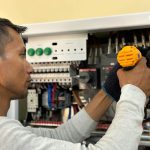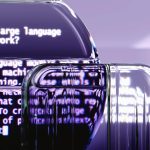## Neural Networks Unravel Cosmic Secrets: New CMB Breakthrough
The universe, in its vast and ancient glory, whispers its secrets to us through the cosmic microwave background (CMB). For decades, scientists have been meticulously decoding these faint signals, searching for clues about the universe’s origins and evolution. Now, a groundbreaking development promises to revolutionize this quest. Researchers have discovered that **neural networks**, the powerful artificial intelligence systems that are rapidly transforming our world, show immense potential as sophisticated tools for dissecting the complex polarization patterns within the CMB. This breakthrough could unlock unprecedented insights into the very fabric of reality.
### The Elusive Echo of Creation: Understanding the Cosmic Microwave Background
Imagine listening to the faintest echo of the Big Bang, a whisper that has traveled across billions of years and unfathomable distances to reach us. That’s essentially what the CMB is. It’s a faint glow of radiation permeating all of space, a snapshot of the universe when it was just a mere 380,000 years old and had cooled enough for atoms to form.
However, this cosmic echo isn’t a simple, uniform hum. It’s riddled with subtle variations in temperature and, crucially, polarization. Polarization refers to the orientation of the light waves. Analyzing these polarization patterns is akin to finding hidden messages within the cosmic static. These patterns hold vital information about:
* **The Early Universe:** They can reveal details about the inflationary epoch, a period of rapid expansion immediately after the Big Bang.
* **Cosmic Structures:** The distribution of matter and the formation of galaxies and clusters are imprinted on the CMB.
* **Fundamental Physics:** Anomalies in the CMB could point to new physics beyond our current understanding.
### The Challenge of Component Separation: Isolating the Cosmic Signal
The primary hurdle in studying the CMB polarization is **component separation**. The faint cosmological signal is often buried beneath overwhelming foreground emissions from our own Milky Way galaxy, such as synchrotron radiation from electrons spiraling in magnetic fields and dust emission. These foregrounds are much brighter and can easily mask the subtle cosmological imprints.
Traditionally, scientists have relied on complex statistical methods and sophisticated modeling to subtract these foregrounds. While these techniques have yielded remarkable results, they are computationally intensive and can introduce uncertainties. This is where the advent of **neural network**-based methods offers a tantalizing alternative.
### AI to the Rescue: Neural Networks as Cosmic Decoders
**Neural networks**, inspired by the structure of the human brain, are adept at identifying intricate patterns in vast datasets. Their ability to learn and adapt makes them ideal candidates for tackling the complex challenge of separating the cosmological CMB signal from galactic foregrounds.
Here’s how this revolutionary approach works:
1. **Training the Network:** Researchers train the neural network on simulated CMB data. This data includes both the idealized cosmological signal and various realistic foreground models. The network learns to distinguish between the two.
2. **Pattern Recognition:** Once trained, the neural network can be applied to real observational data. It analyzes the polarization patterns and, based on its training, identifies and “removes” the foreground emissions.
3. **Unveiling the Cosmology:** With the foregrounds successfully separated, the underlying cosmological signal becomes clearer, allowing for more precise analysis and deeper understanding of the universe’s earliest moments.
### The Power of Deep Learning in Astrophysics
The application of **neural networks** in astrophysics is not entirely new, but their success in CMB component separation marks a significant leap forward. These deep learning models can potentially:
* **Improve Accuracy:** By learning complex, non-linear relationships, neural networks can achieve more accurate separation of foregrounds than traditional methods.
* **Reduce Computational Time:** While training can be intensive, once a network is trained, it can often perform separations much faster than existing algorithms.
* **Handle Complex Foregrounds:** The diversity and complexity of galactic emissions present a formidable challenge. Neural networks, with their adaptive learning capabilities, are better equipped to handle these intricate variations.
* **Discover New Features:** By revealing cleaner CMB data, these AI tools could help scientists uncover subtle features or anomalies that were previously hidden.
### What This Means for Our Understanding of the Universe
The implications of successful **neural network**-based component separation for CMB polarization are profound. This advancement could accelerate our progress in several key areas of cosmology:
* **Probing Inflation:** Detecting primordial gravitational waves, a predicted signature of cosmic inflation, is a major goal in cosmology. These waves leave a distinct imprint on CMB polarization (B-modes). Cleaner data from advanced separation techniques will be crucial for their discovery.
* **Mapping Dark Matter and Dark Energy:** The distribution of matter, influenced by dark matter and dark energy, affects the CMB. Improved component separation can lead to more accurate maps of these mysterious components.
* **Testing Cosmological Models:** Precise measurements of CMB polarization allow scientists to test and refine our standard model of cosmology, potentially revealing deviations that hint at new physics.
* **Future CMB Experiments:** This breakthrough will inform the design and data analysis strategies for upcoming, more sensitive CMB experiments, ensuring we can extract the maximum scientific return from future observations.
### The Road Ahead: Challenges and Opportunities
While the promise of **neural networks** in CMB component separation is undeniable, there are still challenges to address.
* **Data Requirements:** Training effective neural networks requires large, diverse datasets of simulated foregrounds and cosmological signals.
* **Interpretability:** Understanding exactly *why* a neural network makes a particular separation can sometimes be challenging, a phenomenon known as the “black box” problem. Researchers are developing methods to make these models more interpretable.
* **Validation:** Rigorous validation of the neural network’s performance against established methods and independent datasets is crucial to ensure reliability.
Despite these hurdles, the trajectory is clear. The integration of cutting-edge AI techniques like **neural networks** into the study of the cosmic microwave background is not just an incremental improvement; it’s a paradigm shift. It represents a powerful new weapon in our arsenal for deciphering the universe’s oldest light and unlocking its deepest secrets.
The universe is speaking to us through the CMB. With the help of **neural networks**, we are learning to listen more clearly than ever before.
***
**Copyright 2025 thebossmind.com**
**Source Links:**
* [https://www.nasa.gov/missions/plan-to-study-cosmic-microwave-background-radiation/](https://www.nasa.gov/missions/plan-to-study-cosmic-microwave-background-radiation/)
* [https://www.eso.org/public/news/eso2007/](https://www.eso.org/public/news/eso2007/)
Featured image provided by Pexels — photo by Mariana Montrazi










